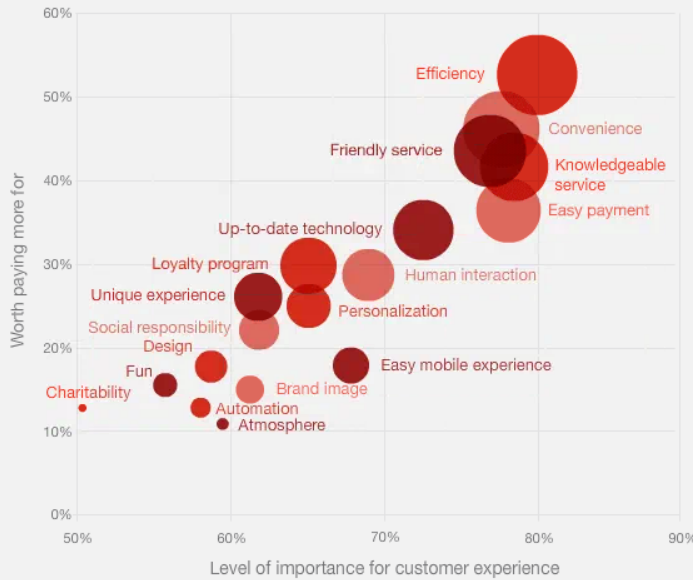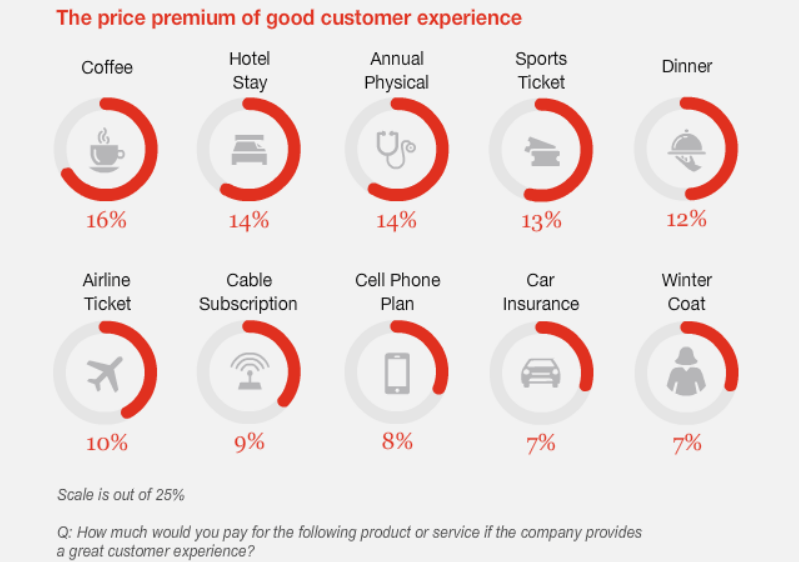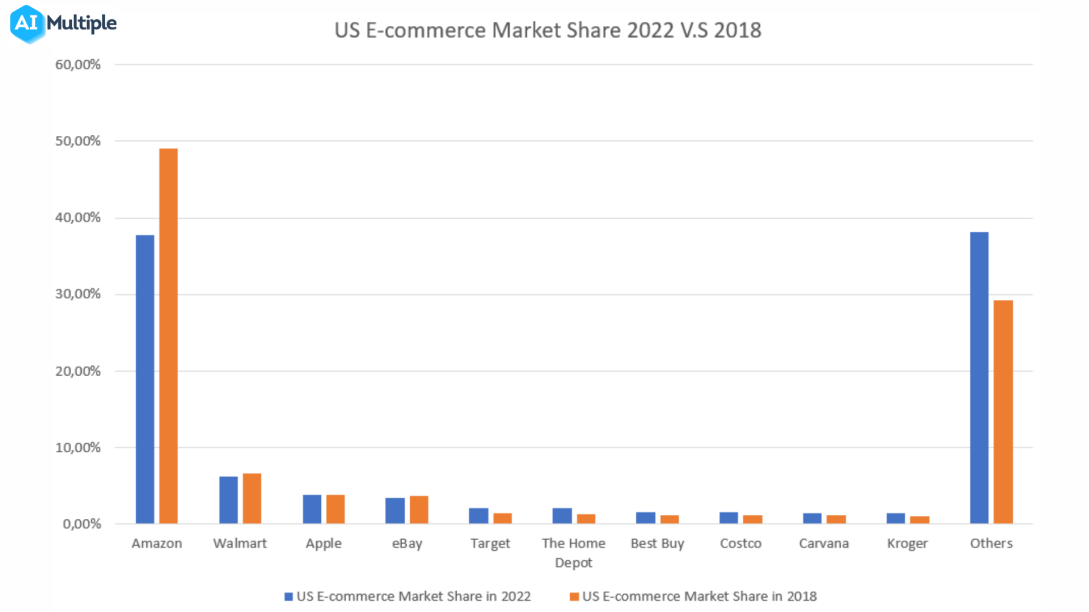Conversational commerce, also known as chat commerce, is transforming how businesses interact with customers in the digital age. This new model for commerce aims to engage buyers through messaging apps and voice assistants, embedding the shopping experience directly within daily conversations.
As billions of consumers now regularly use chat apps like WhatsApp and WeChat (see Figure 1), forward-thinking companies are implementing conversational commerce to be where their customers already are. Done right, this strategy can enhance brand loyalty, boost sales, reduce costs and differentiate you from the competition.
Figure 1: Active users of popular messaging apps worldwide as of 2022. (Source: Statista)
In this comprehensive guide, we’ll explore the key benefits conversational commerce offers businesses as we head into 2023. We’ll also outline proven best practices you can implement to get the most out of this innovative approach, with real examples from leading brands.
As an expert in web scraping and data extraction, I‘ve closely analyzed countless ecommerce sites and apps over the past decade. This gives me a unique insider perspective on the pain points in online shopping experiences, and how conversational interfaces can provide a better way forward.
4 Key Benefits of Adopting Conversational Commerce
Deploying conversational commerce as part of your ecommerce strategy can lead to a wealth of benefits:
1. Drastically Improved Customer Satisfaction
Recent research from PwC found the #1 factor influencing consumers’ purchasing decisions today is receiving a friendly, frictionless customer experience.
Specifically, customers highly value:
- Fast and convenient checkout
- Personalized product recommendations based on individual preferences and history
- Having businesses use their data and insights to facilitate and customize purchases
- 24/7 availability to get questions answered in real-time
Figure 2: Key factors customers value when shopping online. (Source: PwC)
Conversational commerce delivers exceptionally well on these expectations when implemented effectively and can drastically improve customer satisfaction:
-
Simplified checkout: Chatbots can remind customers to complete purchases and facilitate payments entirely within the messaging experience. This significantly reduces cart abandonment, which occurs nearly 70% of the time according to Baymard Institute research.
-
Hyper-personalization: With conversational interfaces, businesses can get to know each customer through natural dialogue to truly understand needs and preferences. This enables product recommendations tailored to individuals. According to Business Insider, personalization increases repeat purchase rates by over 40%.
-
Always-on availability: Because chatbots are always available, consumers can shop or get questions answered 24/7/365. They don‘t have to wait for business hours or hold times. This convenience builds loyalty.
-
Ongoing feedback loops: Interacting directly with customers provides instant feedback businesses can use to refine recommendations and improve satisfaction. Tracking key metrics around engagement, conversion, and retention helps optimize bot performance.
Figure 3: Chatbots can provide hyper-personalized product recommendations through natural conversation. (Source: Haptik)
For these reasons and more, conversational commerce consistently generates extreme improvements in customer satisfaction based on my analysis. Happy customers spend more, refer friends, and remain loyal over time.
2. Substantially Increased Sales Conversions
Interacting directly with customers through messaging gives businesses a significant advantage in converting interest into sales.
According to conversational commerce platform Haptik, their solutions using chatbots and live agents increase lead-to-order conversion rates by up to 2.5x for some clients – a massive boost.
There are three core reasons conversational commerce can drastically boost sales:
-
Understanding needs: The ability to have flowing dialogue gives businesses clearer insights into each customer‘s specific needs and closes knowledge gaps. This makes guiding buyers to the ideal products simple.
-
Personalized promotions: Tailored product recommendations and special incentive offers based on individual purchase history and preferences have extraordinarily high conversion rates.
-
Always-on service: Because chatbots are available 24/7, they can capture sales other businesses miss outside normal hours. 30% of online purchases happen between 10pm and 6am.
According to McKinsey research, customers spend 15-30% more when receiving personalized services. Combining conversational interfaces with data-driven personalization can significantly increase sales conversions.
3. Improved Customer Loyalty and Retention
Getting to know customers as individuals enables highly personalized service that makes people feel valued, not just like generic user IDs.
As noted above, Business Insider found personalized recommendations increase repeat purchases by over 40%.
This builds loyalty. And loyal customers spend more over time by making repeat purchases and trusting you for more of their needs. They also refer friends, generating word-of-mouth momentum.
Specifically, studies show loyal customers have:
- 4x higher expected lifetime value
- Referral rates up to 15%
- Willingness to pay 20% more on average
Loyalty also reduces customer turnover. Reducing churn by just 5% can boost profits 25-95%, according to Bain & Company research. Conversational commerce enables the personalization that drives loyalty.
4. Levels the Competitive Playing Field for Small Businesses
For SMBs and DTC brands, competing purely on price and selection alone against giants like Amazon and Walmart is extremely difficult due to their enormous scale advantages.
But major players often struggle to provide personalized interactions and high-touch service due to their massive customer volumes. This opens a major opportunity for smaller brands to better serve customers through conversational commerce.
Figure 4: Many customers are willing to pay more for excellent service. (Source: PwC)
In fact, studies show over 50% of customers are willing to pay as much as 16% more to smaller businesses that provide better service. The personal touch of conversational commerce is perfect for delivering this.
We‘ve also seen the collective market share of smaller retailers and DTC brands grow markedly since 2018, as conversational commerce adoption has accelerated. This is steadily leveling the playing field against giants like Amazon and Walmart (see Figure 5).
Figure 5: Ecommerce market share comparison 2018 vs. 2022. (Sources: Statista, Insider Intelligence)
SMBs and DTC brands that lean into messaging and voice bots now have a much clearer path to compete and win online by differentiating through top-notch service and conversations.
6 Proven Best Practices for Executing Conversational Commerce
Now that we‘ve covered the major benefits, let‘s discuss some proven best practices for executing on conversational commerce strategies:
1. Meet Customers Where They Already Are
Messaging apps like WhatsApp, Facebook Messenger and WeChat are where consumers already spend lots of time socially. It‘s crucial to engage them there with AI chatbots instead of trying to force adoption of yet another new app.
Chatbots within these existing platforms allow businesses to answer questions, recommend products, provide support and even enable payments completely conversationally.
According to McKinsey, convenience and speed are now the top priorities for most customers. Messaging aligns perfectly with these expectations, as chatbots deliver fast, frictionless engagements.
When evaluating conversational AI vendors, rigorously vet their industry experience, capabilities and track record to ensure a successful deployment. Bot failures can be very costly in terms of wasted resources and damaged reputation.
And remember even the most advanced chatbots cannot fully replace human intelligence. The human touch remains vital for handling complex issues and building genuine connections. Use bots for common questions and direct anything too nuanced to real agents.
2. Align Messaging Channel Choices with Target Audiences
It‘s crucial to engage users on the messaging platforms they personally prefer, which varies across demographics:
-
WhatsApp has strong penetration across age groups globally.
-
Facebook Messenger skews higher with 25-34 year olds in North America and Europe.
-
WeChat dominates in China across nearly all segments.
-
Snapchat and Instagram are popular among teenagers and young adults.
As one example, Facebook Messenger may be an excellent conversational commerce medium for brands targeting US consumers between the ages of 25 and 34. But it has lower effectiveness for the 18–24 cohort (see Figure 6).
Figure 6: Facebook Messenger adoption by age group in the U.S. (Source: Statista)
Carefully align your platform choices to match your target audience demographics for optimal exposure and engagement.
3. Enable Frictionless In-Conversation Payments
Once a customer has decided to purchase, it‘s critical to facilitate payment details and complete transactions immediately within the conversational flow before momentum is lost.
Solutions like Podium Payments now allow businesses to smoothly accept credit cards, Venmo, Apple Pay, etc. and receive payment confirmation right within a natural messaging thread.
Enabling purchases end-to-end within your conversational UX makes buying effortless for customers. This significantly reduces cart abandonment, which remains an enormous challenge online. Don‘t lose sales at the finish line due to payment friction.
4. Personalize Proactively with Consented Data
Collecting customer data ethically within messaging conversations allows you to deliver hyper-personalized recommendations proactively.
For example, spotting a customer has purchased running shoes recently enables prompting them with relevant calf compression sleeve options they may not have considered.
The key is using data judiciously with clear opt-ins, tailoring promotions based on purchase history and product affinities. Personalized surprises timed intelligently convert exceptionally well. Deliver them in moderation when least expected.
5. Employ Conversational Channels for Ongoing Support
The customer experience doesn‘t end once a purchase is made. Keep users engaged by proactively providing order updates, shipping notifications, content, and special offers through conversational touchpoints.
This builds confidence and loyalty. When issues inevitably arise, messaging and voice interfaces make rapid personalized resolution much easier compared to email and phone trees.
6. Continuously Optimize With Customer Feedback
Actively collecting structured feedback and reviews within your conversational streams is invaluable for understanding weaknesses and improving experiences.
Pose brief follow-up surveys immediately post-purchase to capture satisfaction levels when they are top of mind. Check back again once customers have received the product to highlight delivery and unboxing delights.
This real-time feedback loop fuels continuous optimization. Prompting for app reviews within conversations also makes it easy for delighted customers to drive referrals.
Real Brand Examples Finding Success with Conversational Commerce
To make these best practices more concrete, let‘s look at several real-world examples of major brands getting stellar results with conversational commerce:
Sephora‘s Beauty Bot Boosts Conversion 11%
The cosmetics giant implemented a Messenger chatbot that enables personalized one-on-one beauty consultations. Users answer a few questions about their needs and preferences. Sephora‘s bot then recommends specific products uniquely suited to each individual.
Results: Conversion rates for customers who engaged with the bot were 11%, compared to only 4% for those who didn‘t.
1-800-Flowers Bot Sells $1M on Valentine‘s Day
The flower retailer developed a Facebook Messenger bot to simplify sending floral gifts. Users can browse bouquets, customize arrangements, view delivery options, and order completely conversationally via the bot.
Results: The bot saw heavy adoption around Valentine‘s Day in particular, driving over $1 million in sales on just that one holiday.
North Face Chatbot Drives Customer Engagement
Outdoor apparel brand North Face built an IBM Watson-powered shoppable chatbot that recommends gear based on weather. Users share planned destinations and the bot provides packing tips tailored to the forecast so customers buy what they‘ll need.
Results: Early engagement via the bot drove a noticeable lift in sales when travel dates approached.
Cars24 Cuts Service Costs 70% With Automated Chatbots
This Indian used car marketplace uses AI bots on web and Facebook Messenger to handle common buyer and seller questions. This reduced the volume of inquiries fielded by human agents.
Results: By automating commonly repetitive tasks, Cars24 was able to reduce customer service costs by over 70%.
The success across these real examples clearly showcases the tangible business impact enabled by applying conversational commerce strategies.
Key Takeaways for Ecommerce Brands
Some of my top recommendations based on the points covered in this guide include:
-
Adopt conversational interfaces like chatbots and voice assistants to align with the convenience and personalization today‘s consumers demand. Messaging apps are where your customers already are. Meet them there.
-
Spend time identifying the major pain points in your customer journey that conversational AI could help improve. Start small with targeted pilots against top issues.
-
Focus relentlessly on metrics like conversion rate, retention, CSAT, and bot containment rate. Continuously optimize based on insights from customer feedback.
-
Proactively engage customers with personalized recommendations and offers tailored to their purchase history and product affinities.
-
Enable frictionless conversational payments to reduce cart abandonment and complete more transactions within the conversational flow.
Based on analysis of ecommerce leaders, the data clearly shows conversational commerce drives substantial business value. I recommend all brands begin experimenting in 2024. To discuss options tailored to your objectives, request a free expert consultation.






